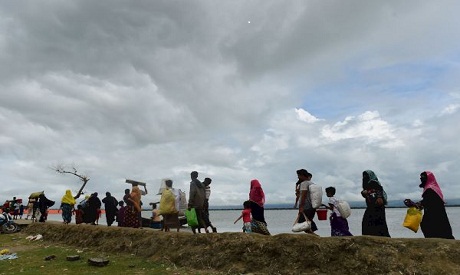
Rohingya Muslim refugees arrive from Myanmar after crossing the Naf river in the Bangladeshi town of Teknaf on September 12, 2017. (Photo: AFP)
An estimated 370,000 Rohingya Muslim refugees have fled to Bangladesh to escape violence in neighbouring Myanmar since late August, a spokeswoman for the U.N. refugee agency, Vivian Tan, said on Tuesday.
At least 457,000 hungry and traumatized refugees have sought refuge in Bangladesh since October 2016. They have joined many thousands of refugees from previous violent episodes in Myanmar.
Here are details gathered from U.N. sources working in the Cox's Bazar district of Bangladesh, on the Myanmar border, where many of the refugees end up.
- The jump in the number of arrivals from Sunday to Monday was fuelled by the movement of many refugees from so-called transit sites into new settlement areas, where they are counted.
- Authorities have been broadcasting messages along crowded roads telling people to move to a proposed camp at a settlement called Kutupalong.
- An area of about 1,500 acres (607 hectares) to 2,000 acres (809 hectares), north of Kutupalong, has been set aside for new arrivals.
- A survey to identify children aged 4 to 14 has been started, so as to enrol them in learning centres.
- People, in particular, children, are becoming susceptible to waterborne diseases due to an acute shortage of clean water and sanitation facilities, as well as the common cold and fever.
- Facilities are improving gradually, for example, two 5,000-litre (1,100-gallon) water tanks have been installed at a settlement called Unchiprang.
- Some rice is now being distributed, in addition to high-energy biscuits.
- The World Food Programme (WFP) has provided more than 68,800 people with high-energy biscuits since Aug. 27 as they arrive seeking shelter in Cox’s Bazar.
- About 77,600 people have received warm meals through community kitchens run by aid agency Action Contre la Faim. These kitchens provide meals for about 5,300 people a day.
- The WFP is especially concerned about women and children arriving hungry and malnourished. Nearly 3,000 pregnant women, new mothers and children under five have received a special, high-nutrient porridge made of wheat and soya flour.
- Some families have taken children out of school, fearing they will get lost in the throng of people, but teachers are trying to reassure them.
Short link: